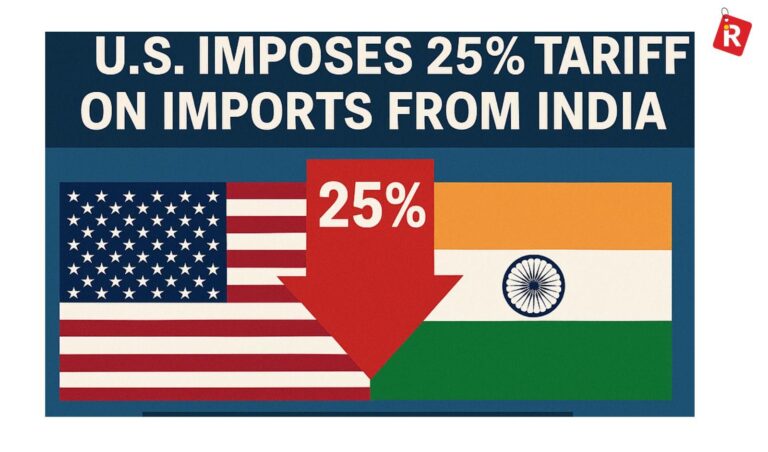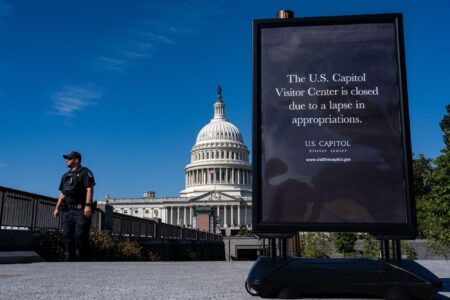Navigating the Economic Fallout of U.S. Tariff Increases on Indian Exports
The recent imposition of a 50% tariff by the United States on a broad spectrum of Indian products marks a significant escalation in trade tensions, threatening to disrupt the established flow of commerce between the two countries. This tariff hike, effective immediately, is poised to challenge Indian exporters across diverse industries, potentially altering the landscape of bilateral trade and impacting the global economic environment. As India strategizes its response, experts and policymakers are vigilantly assessing the ramifications of these measures.
Industries bearing the brunt include:
- Steel and aluminum production
- Pharmaceutical manufacturing and exports
- Information technology and software services
- Textile and garment sectors
| Industry | Annual Export Value (USD Billion) | Projected Impact (%) |
|---|---|---|
| Steel | 12.5 | 25% |
| Pharmaceuticals | 20.3 | 18% |
| Information Technology | 55.0 | 15% |
| Textiles | 10.8 | 22% |
Indian exporters are already feeling the pressure, with rising costs squeezing profit margins and diminishing their foothold in the U.S. market, one of their largest trading partners. Stock prices of companies heavily reliant on exports have shown volatility, signaling investor concerns. Economists warn that if these tariffs persist, they could slow India’s economic growth by reducing foreign currency inflows and dampening industrial output.
In response, government authorities are actively exploring diplomatic channels to negotiate tariff reliefs while simultaneously encouraging diversification of export destinations to lessen dependence on the U.S. market. Industry representatives are calling for swift policy interventions and financial support to help businesses weather the storm, highlighting the risk of job losses and slowed industrial progress if the situation remains unresolved. Meanwhile, global economic observers advocate for multilateral dialogue to ease escalating trade frictions.
Detailed Sectoral Insights: Identifying Risks and Growth Avenues
The 50% tariff increase imposed by the U.S. has unveiled both vulnerabilities and potential growth opportunities within India’s industrial sectors. The textile and apparel industry is particularly exposed due to its heavy reliance on American consumers, threatening the livelihoods of numerous small and medium-sized enterprises (SMEs). In contrast, sectors like pharmaceuticals and information technology services demonstrate greater resilience, buoyed by their diversified global client base and less susceptibility to trade barriers.
Additional sectors navigating this complex environment include:
- Automotive Parts: While increased tariffs dampen export demand, rising domestic consumption offers a buffer against losses.
- Agriculture and Food Processing: These sectors face challenges due to restricted access to U.S. markets, but government stimulus efforts aim to stabilize production and explore alternative markets.
- Electronics and Consumer Goods: The ‘Make in India’ campaign is attracting investments, presenting opportunities to offset export setbacks through enhanced domestic manufacturing.
| Sector | Current Impact | Potential Opportunity |
|---|---|---|
| Textiles & Apparel | Significant export decline | Expansion into emerging markets |
| Pharmaceuticals | Moderate disruption | Growth in generic drug demand globally |
| Information Technology | Minimal impact | Rising demand for remote work solutions |
Government Initiatives to Counteract Tariff Challenges
In light of the sudden 50% tariff imposition by the U.S., the Indian government has launched a comprehensive strategy aimed at mitigating the adverse effects on domestic industries. Central to this approach is the enhancement of export incentives designed to boost competitiveness in alternative international markets. Concurrently, diplomatic efforts are intensifying to seek tariff reductions or exemptions through bilateral negotiations.
Moreover, the government is doubling down on the Make in India initiative, promoting indigenous manufacturing to reduce reliance on imports vulnerable to tariff fluctuations. Special attention is being given to SMEs, which are disproportionately affected by these trade barriers. Financial relief measures, including easier access to credit and liquidity support, are being rolled out alongside capacity-building programs to improve export readiness.
- Revamped export promotion schemes to incentivize diversification
- Targeted trade diversification focusing on emerging economies in Asia, Africa, and Latin America
- Subsidies and incentives to encourage import substitution
- Streamlined customs procedures to accelerate shipment processing
- Legal action through WTO dispute resolution mechanisms
| Initiative | Goal | Immediate Effect |
|---|---|---|
| Export Incentives | Sustain global competitiveness | Increased export activity |
| Make in India Expansion | Reduce import reliance | Growth in domestic manufacturing |
| Liquidity Support for SMEs | Stabilize small businesses | Improved SME resilience |
| Diplomatic Engagements | Seek tariff reductions | Potential easing of trade barriers |
Strategic Policy Suggestions to Foster India-U.S. Trade Relations
In the aftermath of the U.S. tariff escalation, it is imperative for both India and the United States to realign their economic policies to sustain and enhance bilateral trade. Establishing transparent and predictable trade frameworks will be crucial in rebuilding trust and minimizing uncertainties caused by tariff fluctuations. Encouraging continuous dialogue between government bodies and industry leaders can facilitate collaborative problem-solving, particularly in sectors like IT, pharmaceuticals, and textiles that are vital to both economies.
Recommended actions include:
- Negotiating selective tariff exemptions to protect jobs and maintain supply chain stability in sensitive industries.
- Launching joint innovation programs to accelerate technology exchange and digital infrastructure development.
- Aligning customs and regulatory standards to streamline cross-border trade and reduce bureaucratic delays.
- Strengthening bilateral investment treaties to provide security and incentives for investors from both nations.
| Sector | Priority Action | Anticipated Benefit |
|---|---|---|
| Information Technology | Modernize customs processes | Faster clearance and reduced costs |
| Pharmaceuticals | Mutual recognition of quality standards | Accelerated market access |
| Textiles | Targeted tariff reliefs | Sustained export competitiveness |
Final Thoughts on India-U.S. Trade Tensions and Future Outlook
With the enforcement of the 50% U.S. tariffs, India stands at a critical crossroads in its trade relationship with the United States. The immediate economic consequences are prompting businesses and policymakers to seek innovative solutions to mitigate adverse effects. The coming months will be decisive in shaping how both nations manage this heightened trade friction amid a complex geopolitical and economic backdrop. Continuous monitoring and adaptive strategies will be essential to safeguard the future of India-U.S. trade partnerships.





